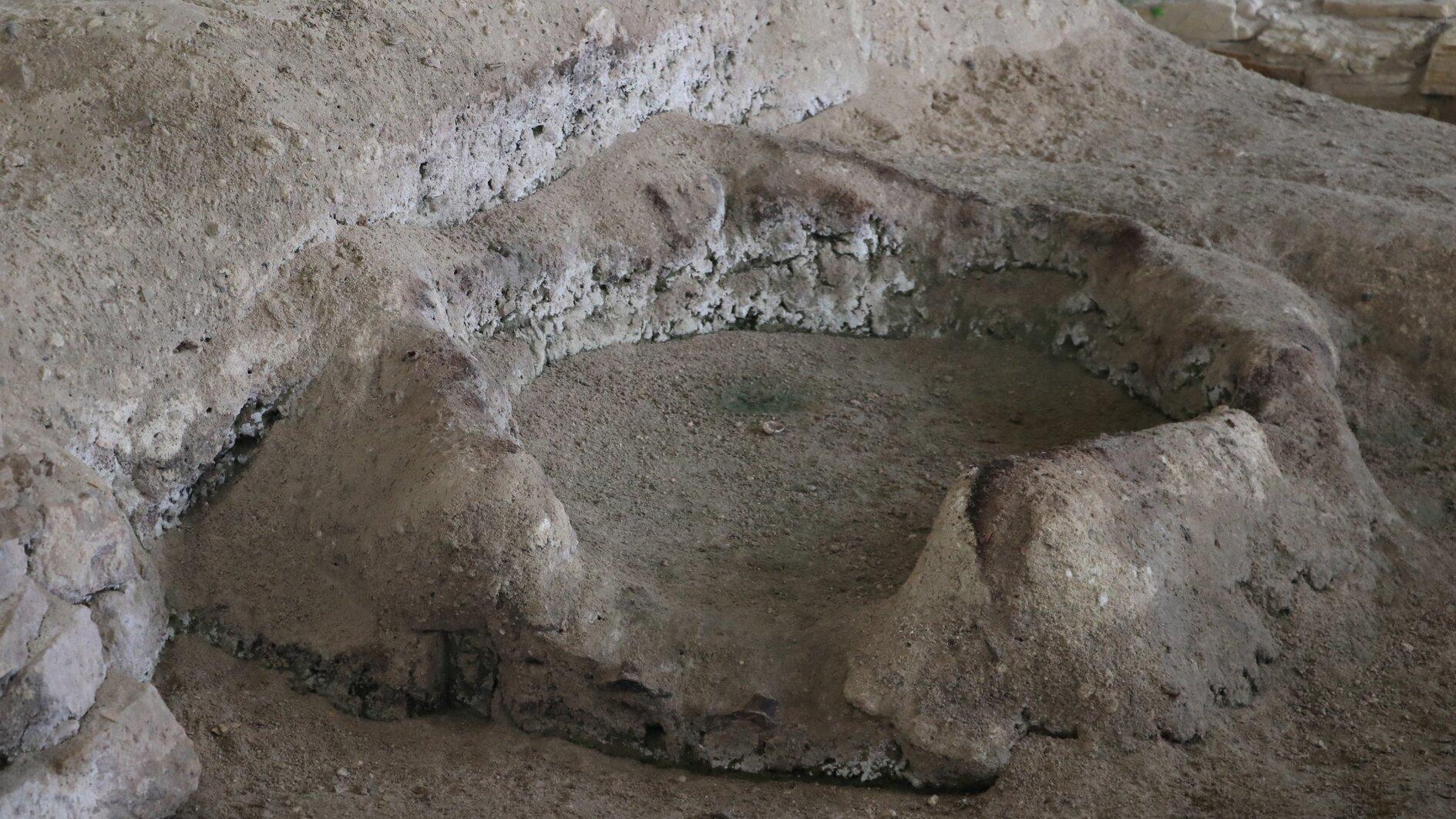
Findings from excavations conducted between 2009 and 2019 in Bağlararası, located in İzmir’s Çeşme district, provide evidence of the devastation caused by the tsunami triggered by the Santorini volcanic eruption 3,500 years ago along the Aegean coast.
With a history of nearly 4,000 years, Bağlararası is the oldest settlement in Çeşme and has valuable data as a key port city from the Bronze Age in Western Anatolia.
Excavations that began in 2001 with support from the Culture and Tourism Ministry were headed by Professor Vasıf Şahoğlu, director of Ankara University’s Mustafa V. Koç Maritime Archaeology Research Center (ANKÜSAM), until 2019.
Speaking to state-run Anadolu Agency, Şahoğlu stated that the excavations conducted between 2009 and 2019 uncovered traces of one of the greatest natural disasters in prehistoric times.
He stated that volcanic ash was discovered in 2012, tsunami remnants in 2013, and a skeleton buried within the tsunami deposits in 2017 at the Bağlararası excavation site. He also noted that the scientific analysis of these findings took a decade, with the results published in 2022 in the journal of the U.S. National Academy of Sciences.
Highlighting the significance of the Santorini eruption, which took place approximately 3,500 years ago, Şahoğlu said, “The Santorini eruption is perhaps the only natural event in human history whose traces can be followed in a distinct line. Its impact was enormous, as the eruption occurred in one of the most densely populated regions of the Mediterranean basin. This disaster struck during the peak of Minoan maritime dominance.”
Şahoğlu said that the scientific importance of the volcanic ash layer discovered during excavations, stating: “When the Santorini Volcano erupted, the ashes that rose into the sky were detected as a distinct layer at the Çeşme-Bağlararası excavation site. The same ash layer was also found in an excavation in Egypt, providing a unique marker that allows us to look at the same moment in history.”
He also pointed out that Bağlararası is the only known site where both the volcanic ash and the tsunami remnants caused by the Santorini eruption have been found together, adding, “The tsunami deposits in Bağlararası mark the first archaeological site where evidence of tsunamis triggered by the Santorini eruption has been identified. While volcanic ash had previously been found in geological core samples, tsunami remains had never before been discovered within an archaeological settlement. This event likely resulted in the loss of thousands of lives in settlements along the Aegean coast. Despite being 227 kilometers away from Santorini, the tsunamis completely destroyed the settlement in Çeşme-Bağlararası, rendering it uninhabitable thereafter. Until now, no human remains had ever been found from this catastrophic event. However, in our 2017 excavations in Çeşme, we uncovered a skeleton belonging to a young male, approximately 17 years old, among the tsunami deposits.”
Plans to transform the site into an archaeological park
Noting that the Santorini Volcano remains active, Şahoğlu said, “Today, when we think of tsunamis, most of us imagine Japan or Indonesia. However, one of the largest and most destructive tsunamis occurred in the heart of the Aegean, on Santorini Island.”
He also stated that works are underway in collaboration with the ministry to transform the site into an archaeological park that narrates the story of this major catastrophe.